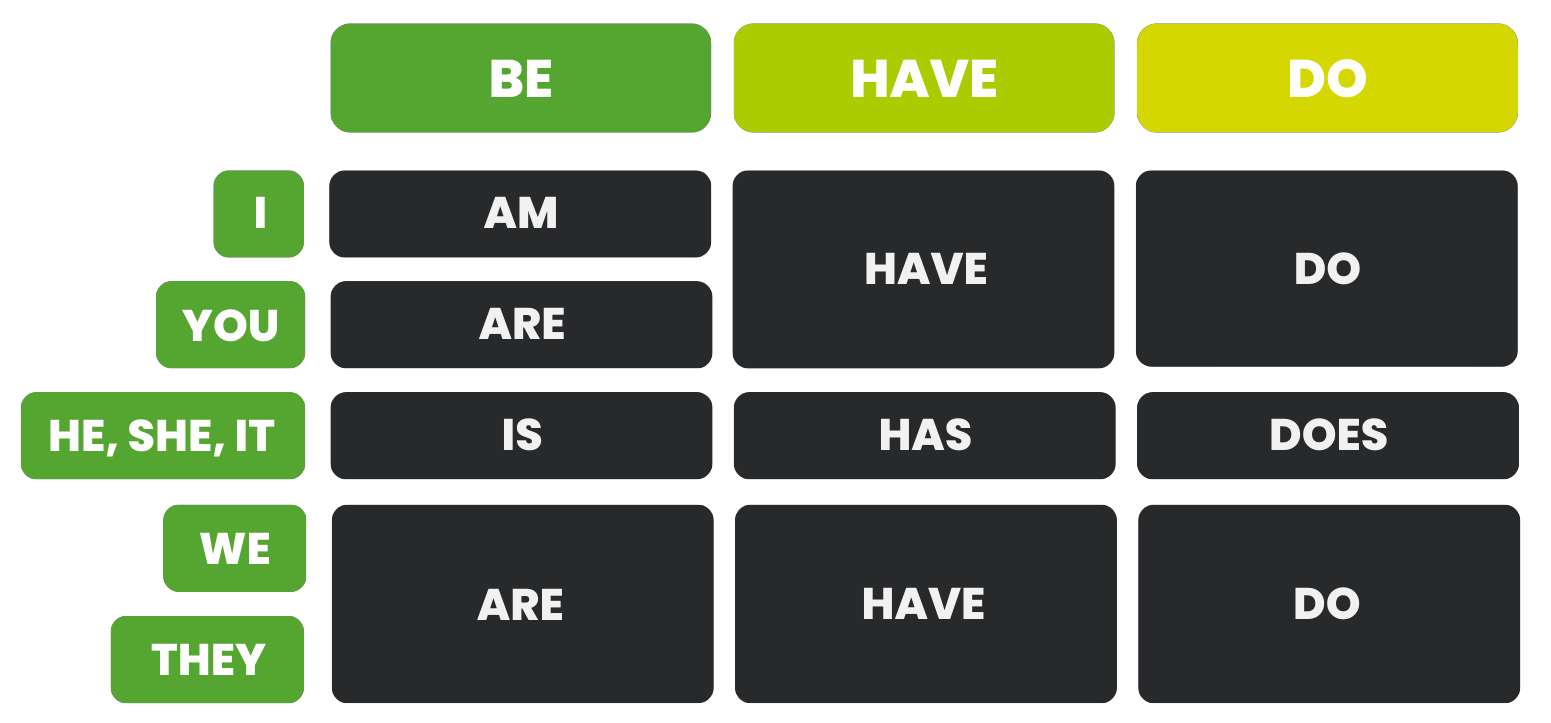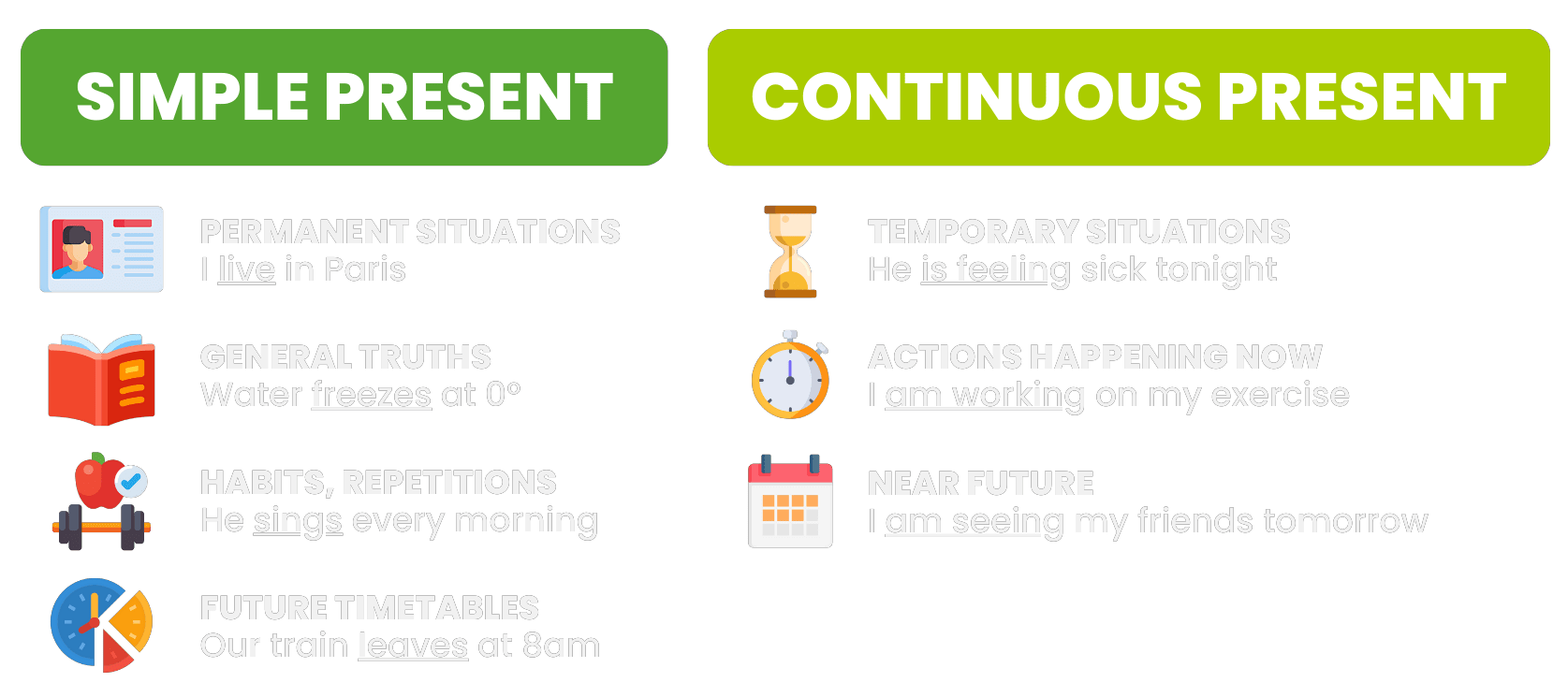I – Simple present
The simple present as its name indicates is the simplest tense in English. The only rule to remember is to add the -s at the end of the verb for the pronouns “he, she” or “it”.

⚠️ If the verb ends in -o add -es instead. If it ends in -y add -ies. If it ends in -ch, -x, or -sh add -es.

Auxiliaries with the simple present
II – Continuous present

The continuous present is used in three different contextes (see picture on the left). It is created with the auxiliary be in the present and the suffix -ing.

⚠️ Make sure to conjugate the auxiliary in the present according to the subject.
